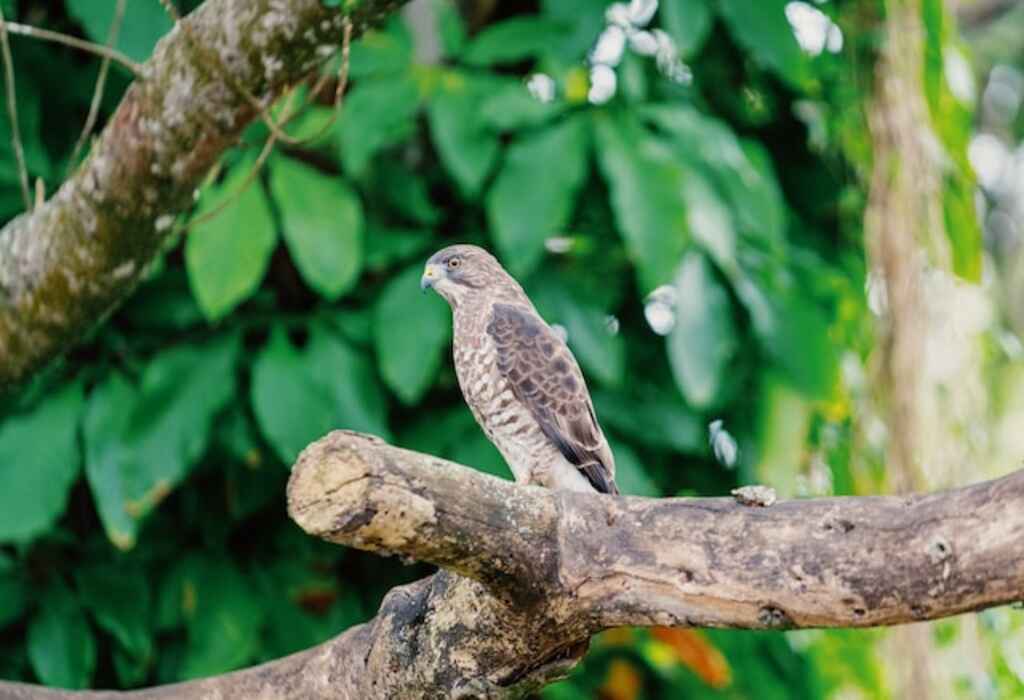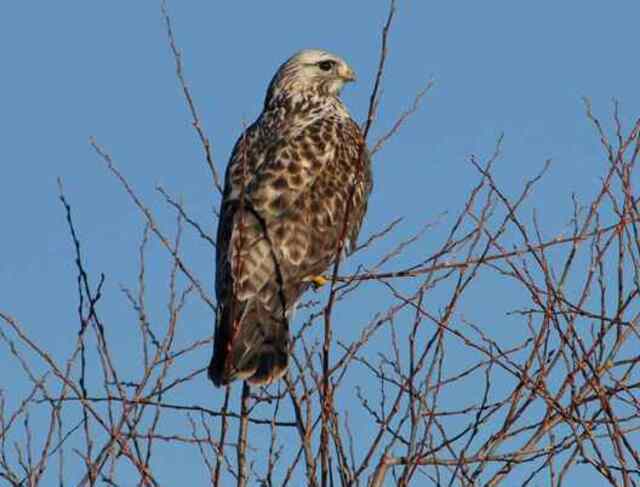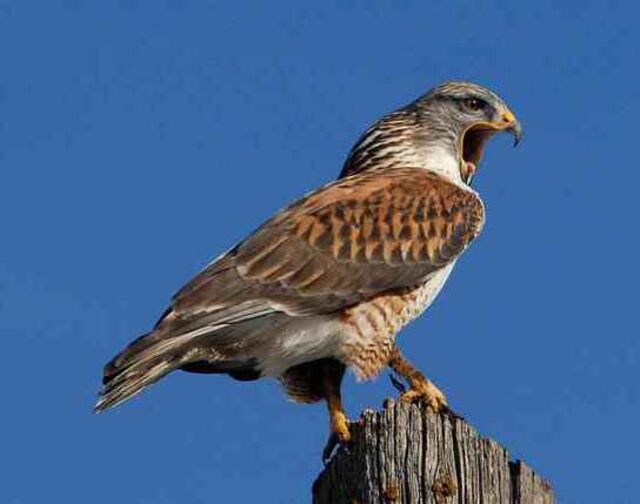Hawks are majestic birds of prey that are known for their sharp talons and keen eyesight. They are considered apex predators and are known to hunt and feed on small animals such as rodents, rabbits, and snakes.
However, under certain circumstances, hawks may also consume plant material, including berries. This raises the question: do hawks eat berries?
To answer this question, we must first examine the diet of hawks in general and the different types of hawks that exist.
We must also consider the difference between omnivorous and carnivorous birds, as well as the reasons why hawks might consume berries.
By exploring the various types of berries that hawks might eat and how they digest plant material, we can gain a better understanding of the importance of diet diversity and the obstacles that hawks face in obtaining a balanced diet.
Table of Contents
- 1 Key Takeaways
- 2 Overview of Hawk’s Diet
- 3 Types of Hawks
- 4 Omnivorous vs. Carnivorous Birds
- 5 Why Hawks Might Eat Berries?
- 6 Do Hawks Eat Berries?
- 7 Types of Berries Hawks Might Eat
- 8 Other Plants Hawks Might Eat
- 9 How Hawks Digest Plant Material
- 10 The Importance of Diet Diversity
- 11 Obstacles to Hawk’s Diet
- 12 Frequently Asked Questions
- 12.1 Do all species of hawks eat berries, or just certain ones?
- 12.2 Are there any negative effects on a hawk’s health if it consumes too many berries?
- 12.3 How do hawks locate and choose which berries to eat?
- 12.4 Do hawks ever use berries as a food source during the winter months?
- 12.5 Can a hawk survive solely on a diet of berries or is it necessary for them to also consume meat?
- 13 Conclusion
- 14 Author
Key Takeaways
- Hawks are primarily carnivorous, but they can adjust their diet based on species and location.
- Hawks have been observed consuming berries for nutritional benefits such as essential nutrients and hydration.
- Hawks face threats such as habitat loss, hunting, and pesticides, which impact their prey availability and diet diversity.
- Diet diversity is crucial for hawk health and survival, and conservation efforts are necessary to protect hawk habitats and prey species.
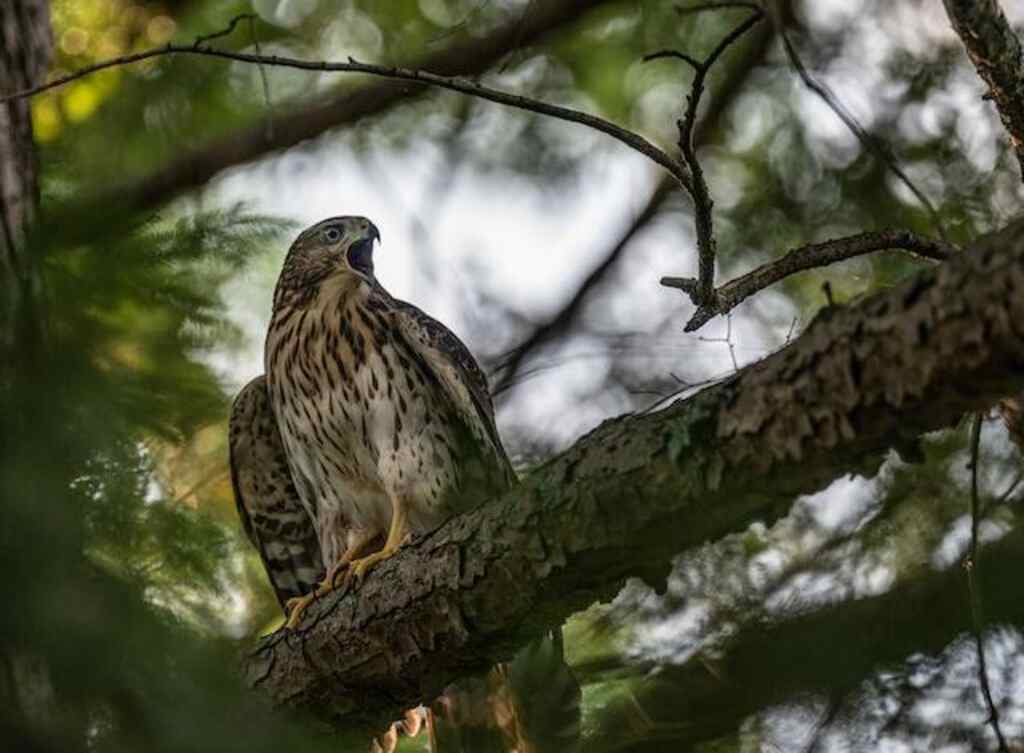
Overview of Hawk’s Diet
An examination of the dietary habits of hawks reveals a complex and varied feeding strategy, incorporating a diverse range of prey items including small mammals, birds, reptiles, and insects.
Hawks are known for their exceptional hunting techniques, utilizing their sharp talons, keen vision, and agility to catch prey both on the ground and in the air.
However, habitat loss has had a significant impact on hawk’s diet, as it has led to a decrease in the availability of their preferred prey items.
This has resulted in some hawks adjusting their diets to include more plant material, such as fruits and berries, to supplement their nutrition.
Nonetheless, hawks remain primarily carnivorous, with their diet varying based on their specific species and geographic location.
Understanding the dietary habits of different types of hawks is essential in not only preserving their populations but also maintaining the delicate balance of ecosystems they inhabit.
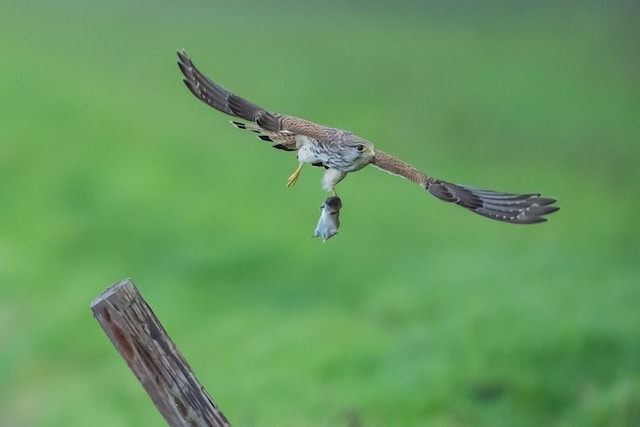
Types of Hawks
This section will discuss the different types of hawks, including Sharp-Shinned Hawks, Red-Tailed Hawks, and Cooper’s Hawks.
Sharp-Shinned Hawks are small and agile, often found in wooded areas and preying on small birds.
Red-Tailed Hawks are larger and more commonly found in open areas, preying on rodents and other small mammals.
Cooper’s Hawks are similar in size to the Sharp-Shinned Hawk, but with a more powerful build and often hunting in residential areas.
Understanding the characteristics and behaviors of these hawks can provide insight into their role in the ecosystem and aid in their conservation efforts.
Sharp-Shinned Hawks
Sharp-Shinned Hawks, a small species of hawk found throughout North America, primarily feed on small birds and mammals but have been known to occasionally consume insects and other prey.
These hawks are known for their remarkable agility and speed, which allows them to swiftly catch their prey in flight.
In addition to their hunting behavior, Sharp-Shinned Hawks exhibit distinct habitat preferences, with a preference for dense forested areas where they are well-camouflaged and have access to prey.
Hawk behavior studies have shown that these birds are highly territorial and will defend their nests and hunting grounds fiercely.
Interestingly, Sharp-Shinned Hawks have been observed eating berries on rare occasions, which is uncommon for this species.
This behavior may occur during times of food scarcity or when other prey is not readily available.
Overall, Sharp-Shinned Hawks are fascinating creatures that exhibit unique behaviors and adaptations that allow them to survive in their environments.
Moving onto the next subtopic, red-tailed hawks are another species of hawk found throughout North America that exhibit different behaviors and adaptations.
Red-Tailed Hawks
Red-Tailed Hawks, a common species of hawk found throughout North America, exhibit distinctive physical characteristics and behavioral adaptations that enable them to survive in a variety of environments.
These hawks are known for their broad, rounded wings and fan-shaped tail, which are both critical to their hunting success.
Due to their size and strength, they are able to take down a variety of prey, including rabbits, squirrels, and other small mammals.
However, Red-Tailed Hawks are not exclusively carnivorous. They have been known to eat berries and other plant material when prey is scarce, demonstrating their adaptability to changing environmental conditions.
These hawks also exhibit habitat preferences, typically nesting in tall trees or on cliffs, and preferring open areas such as grasslands or deserts. They are also known to thrive in urban environments, such as city parks and golf courses.
Overall, the Red-Tailed Hawk’s behavior and habitat preferences make them a highly adaptable and successful species.
As we transition to the next section about Cooper’s Hawks, it is worth noting that while these two species share some similarities, they also exhibit distinct differences in their behavior and habitat preferences.
Cooper’s Hawks
Cooper’s Hawks, also known as Accipiter cooperii, are medium-sized birds of prey that have adapted their hunting techniques to thrive in urban environments.
These birds are characterized by their short, rounded wings and long tails that enable them to maneuver through dense vegetation while hunting.
Cooper’s hawks are carnivorous and primarily feed on birds, but they are also known to consume small mammals, reptiles, and insects.
They have a preference for forested areas and are commonly found nesting in deciduous trees.
However, due to their adaptability, they have been able to thrive in urban areas, where they hunt birds in parks and gardens.
Despite their adaptability, Cooper’s hawks face threats such as habitat loss and fragmentation, illegal hunting, and pesticide use.
Their conservation status is currently listed as Least Concern, with population trends showing a stable population size.
Understanding Cooper’s hawk behavior and habitat preferences can help in developing conservation strategies to ensure their continued survival.
Moving forward, it’s important to consider the omnivorous vs. carnivorous tendencies of birds of prey to understand their ecological roles and how we can best support their populations.
Omnivorous vs. Carnivorous Birds
Birds can be categorized into two main groups based on their dietary habits: omnivorous and carnivorous. Omnivorous birds consume both animal and plant matter, while carnivorous birds primarily feed on other animals.
There are pros and cons to having an omnivorous diet. On the one hand, it provides a wider range of available food sources, allowing the bird to adapt to different environments and seasons.
However, some plant matter may be difficult to digest, and consuming too much of it could lead to health issues.
Additionally, birds with an omnivorous diet may face competition from other animals for resources.
Hawks, in particular, are known to be carnivorous birds that feed on small mammals and birds. However, they have been observed consuming berries on occasion.
The reasons behind this behavior are not fully understood and may vary between different species and regions.
Why Hawks Might Eat Berries?
Although hawks are typically known for their carnivorous diet, it may come as a surprise that they occasionally consume berries.
Hawks and their omnivorous tendencies have been observed in various studies, and it has been suggested that they consume berries for the nutritional benefits they offer.
Incorporating berries in a hawk’s diet can provide them with essential nutrients such as vitamins, minerals, and antioxidants.
Berries also contain high levels of carbohydrates and fiber, which can provide energy and aid in digestion. Additionally, consuming berries can help hawks stay hydrated as they contain high water content.
It is important to note that while berries may offer nutritional benefits to hawks, they should not be relied upon as a sole source of nutrition.
In the subsequent section about ‘types of berries hawks might eat,’ we will explore different types of berries that hawks may incorporate into their diet.
Do Hawks Eat Berries?
Yes, hawks do eat berries. While hawks are primarily carnivorous birds, some species have been observed consuming berries as part of their diet.
Berries can provide hawks with additional nutrients and moisture, especially during certain seasons when prey availability may be limited.
However, berries typically make up a small portion of a hawk’s diet, and they rely mainly on meat for sustenance.
Types of Berries Hawks Might Eat
Various types of berries can be found in the natural habitat of hawks, serving as a potential food source for these raptors.
Common berry varieties that hawks might consume include elderberries, holly berries, and juniper berries.
These berries are not only a source of hydration for hawks, but they also provide essential nutrients such as carbohydrates, vitamins, and antioxidants.
For example, elderberries are high in vitamin C, which aids in immune function, while holly berries are rich in fat content, providing energy for the birds.
Juniper berries, on the other hand, contain high levels of protein, which are necessary for muscle growth and repair. Thus, consuming these berries can be beneficial for hawks’ overall health and survival.
However, it is important to note that berries are not the only plant-based food that hawks might consume, as they also feed on a range of other plants and vegetation.
Other Plants Hawks Might Eat
A range of plant species, such as grasses, seeds, and nuts, are also included in the diet of hawks in addition to berries. Hawks are opportunistic predators and will consume plant material when their preferred prey is scarce.
Some hawks, such as the red-tailed hawk, have been observed feeding on agricultural crops like corn and soybeans.
However, the nutritional value of plants in a hawk’s diet is lower than that of animal prey, and hawks typically consume larger quantities of plants to compensate.
Additionally, hawks have a unique feeding behavior where they tear off small pieces of plant material and consume them slowly. This allows them to better digest the tough cellulose fibers found in plants.
Understanding how hawks digest plant material is important in fully understanding their dietary habits and overall behavior.
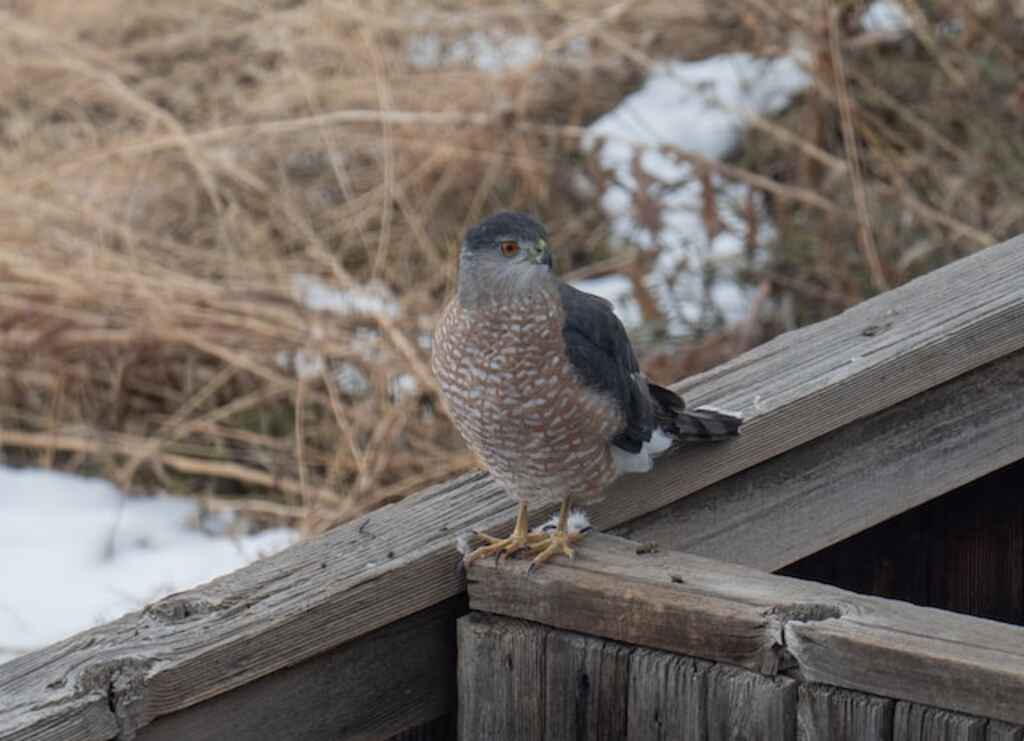
How Hawks Digest Plant Material
The digestion process of plant material is a crucial aspect of hawks’ dietary habits and feeding behavior. Hawks have a unique digestive system that allows them to extract nutrients from a variety of food sources, including plants.
Enzymes in the hawk’s stomach break down the tough plant material, allowing the bird to access nutrients that would otherwise be indigestible.
The hawk’s stomach structure is also adapted to digest plant matter efficiently. When it comes to berries in the hawk’s diet, these fruits provide a source of nutrition for the bird.
Berries are rich in vitamins and minerals, making them an important food source for hawks. However, their availability is seasonal, and hawks must rely on other food sources when berries are scarce.
Understanding the role of plant material in the hawk’s diet is essential for maintaining a healthy and diverse diet.
In the next section, we will explore the importance of diet diversity for hawks and how it affects their survival in the wild.
The Importance of Diet Diversity
Diet diversity plays a crucial role in maintaining the health and survival of hawks in the wild. The importance of a varied diet for hawks cannot be overstated, as it provides numerous benefits.
Some of the benefits of a diverse diet for hawks include obtaining a balanced mix of nutrients, reducing the risk of disease, and increasing the chances of survival during times of food scarcity.
A varied diet can also help hawks adapt to changing environmental conditions, ensuring their long-term survival.
In addition, consuming a variety of prey species can help hawks avoid toxic substances that may be present in a single prey species.
Ensuring that hawks have access to a diverse range of prey species is therefore essential for their survival.
As we move into the next section, we will examine some of the obstacles that hawks face when it comes to obtaining a varied diet.
Obstacles to Hawk’s Diet
Hawk’s ability to access a diverse range of prey species is hindered by various obstacles that affect their diet. These obstacles include habitat loss, climate change, and human activities.
Hawks require a diverse diet to meet their nutritional requirements, which includes a mix of small mammals, birds, reptiles, and insects.
However, habitat loss due to deforestation, urbanization, and agricultural practices can reduce the availability of prey species and limit the diversity of hawks’ diets.
Climate change can also affect the distribution and abundance of prey species, making it harder for hawks to find enough food.
Human activities, such as hunting, poisoning, and collision with vehicles and structures, can also reduce the number of prey species and cause mortality among hawks.
These obstacles to hawk’s diet pose a significant threat to their survival and highlight the need for conservation efforts to preserve their habitats and protect their prey species.
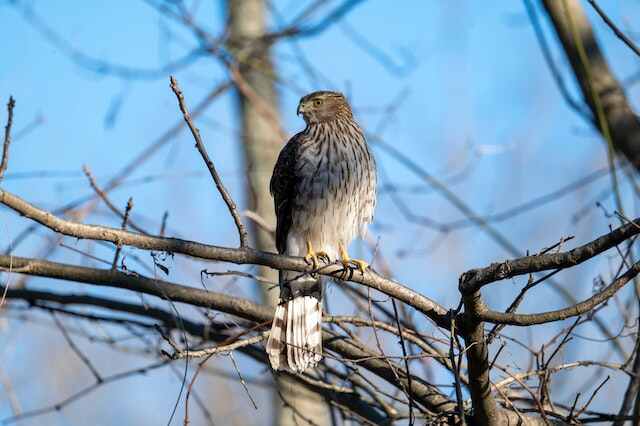
Frequently Asked Questions
Do all species of hawks eat berries, or just certain ones?
Comparing berry consumption among different raptor species reveals varied dietary preferences and the impact on ecosystems. Understanding the extent and frequency of berry consumption by hawks is important for comprehending the role these birds play in the ecosystem.
Are there any negative effects on a hawk’s health if it consumes too many berries?
Berries can provide a dietary supplement for captive hawks, but their nutritional value compared to other hawk food sources is variable. Excessive consumption can lead to nutritional imbalances, potentially impacting a hawk’s health.
How do hawks locate and choose which berries to eat?
Berry preferences play a significant role in the hawk’s diet and behavior. Hawks locate and select berries based on their color, size, and texture. They prefer berries that are high in sugar content and easily digestible. This behavior is crucial for maintaining their health and energy levels.
Do hawks ever use berries as a food source during the winter months?
During winter months, some hawk species rely on berries as a food source, benefiting from their high nutritional value. Hawk migration patterns also reveal that some species may travel to areas with greater access to berry resources.
Can a hawk survive solely on a diet of berries or is it necessary for them to also consume meat?
The Berries vs. Meat: Hawk Nutrition Debate centers on whether hawks can survive solely on berries or require meat. Comparing the nutritional value of berries and meat shows that hawks need meat to thrive. An engaging scientific style can provide informative detail for audiences seeking freedom.
Conclusion
In conclusion, hawks are primarily carnivorous birds, preying on small animals such as rodents, reptiles, and other birds.
However, some species of hawks have been known to consume plant material, including berries and other fruits. The diet of a hawk varies depending on its species, habitat, and availability of prey.
Hawks that consume plant material may do so for a variety of reasons, such as to supplement their diet during lean times, or as a source of hydration.
Some of the types of berries that hawks might eat include elderberries, holly berries, and juniper berries, among others. They may also consume other plant material, such as leaves and seeds.
Despite being primarily carnivorous, hawks are capable of digesting plant material due to the presence of specialized digestive enzymes in their stomachs.
It is important for hawks to have a diverse diet that includes both animal and plant material to ensure they receive all the necessary nutrients for survival.
Interestingly, a study conducted in 2018 found that approximately 80% of hawks in urban areas had consumed some form of human-provided food, such as bread or meat scraps.
This statistic highlights the impact of human activity on wildlife and serves as a reminder of the importance of responsible waste management and conservation efforts.
By understanding the dietary habits of hawks and other wildlife, we can work towards creating a more sustainable and harmonious environment for all species to thrive.

